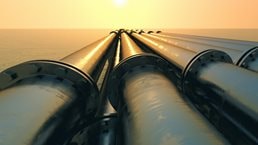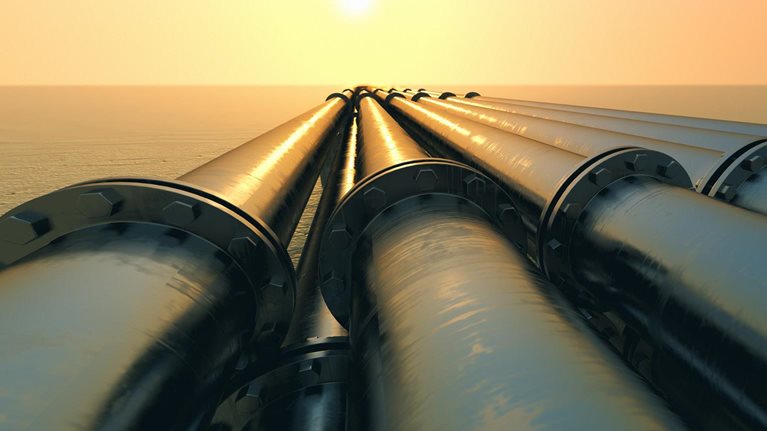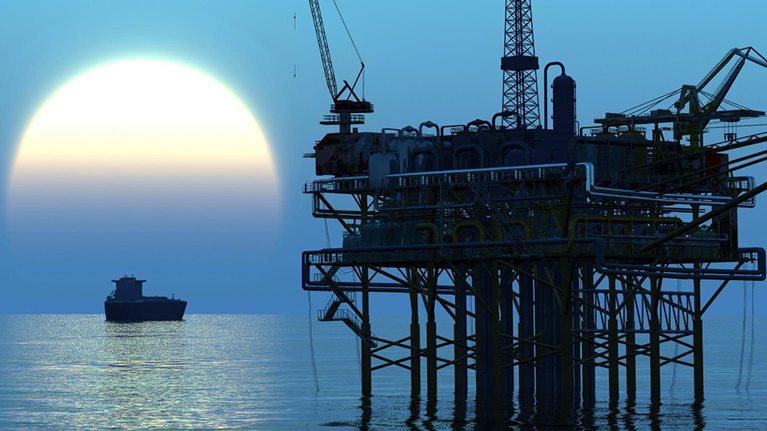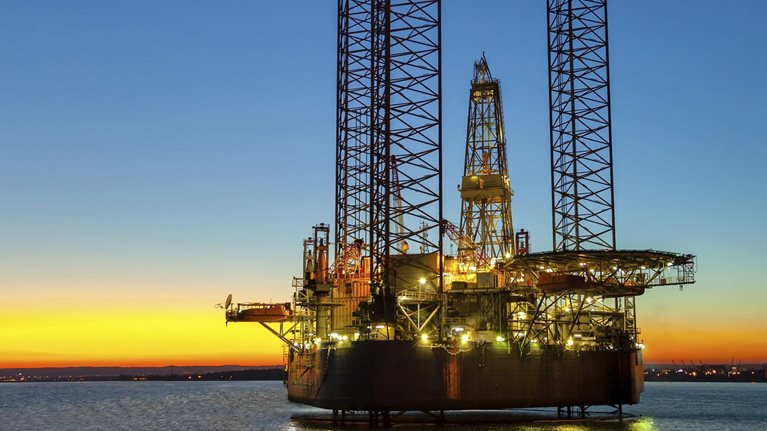Quarterly perspective on oil field services and equipment: August 2016
The second quarter of 2016 began on a positive note with prices rising and appearing to stabilize at around $50/barrel, before falling back and then recovering again to the same level by mid-August. Both Schlumberger and Halliburton said in their second quarter earnings calls that the industry downturn had reached bottom, with signs of recovery including a marked slowdown in the Oil Field Services & Equipment (OFSE) quarterly revenue decline, firmer margins in EPC and Assets, and a slight rise in rig counts in some areas.
The size of the total OFSE sector pie shrank once again in Q2, with operator capex contracting for the ninth quarter running (apart from a slight rise in Q4 2015), reducing the revenue pool for OFSE companies. Overall, the OFSE sector revenue fell by 25.6 percent versus Q2 2015, reaching its lowest levels since before 2008. The size of the fall was, however, a slight improvement compared to the Q1 and Q4 comparisons, which showed a 30 and 36 percent drop year-on-year.
Moreover, at just –4.1 percent, the contraction in revenue between Q1 and Q2 was far less than that between Q1 and Q4, which suggests OFSE is starting to benefit from an increase in activity, and may not need prices to rise much further for revenues to stabilize or even increase. Margins were more positive, too, with all but Services managing an increase compared to Q1.
On the equity markets, OFSE share values rebounded with the spring recovery in crude prices, as investors moved in to benefit from further potential upside. The recent volatility in crude has also been mirrored in OFSE share values, although they remain above their lows of January this year and, apart from Equipment, are on an upward trajectory. Actual OFSE performance apparently continues to have little overall impact, with crude being the main driver.
While there may have been some improvement in the rate of revenue decline, the downward pressure on revenue from falling capex is expected to continue this year. Most estimates of E&P spending now expect a contraction of around 25 percent worldwide in 2016, the same rate as 2015. This is up around 10 percent from most predictions at the beginning of the year. Latin America and Asia-Pacific join North America as the areas targeted for the most significant cuts.
Would you like to learn more about our Oil & Gas Practice?
OFSE M&A activity in the quarter was dominated by Technip’s $14 billion merger with FMC in May, which came close on the heels of the collapse of Halliburton’s $38 billion takeover of Baker Hughes. More consolidation had been anticipated as oil prices look like stabilizing, but only $1 billion in deals were done elsewhere among OFSE companies, compared to $5 billion in Q2 2015.
Key trends
Oil prices stabilize around $50/barrel; volatility increases in July and August
Oil prices firmed during the second quarter, peaking at $53.26/barrel on June 9, before dipping in volatile trade to $42/barrel by early August and then recovering quickly back towards $50/barrel. Overall, prices rose almost $10/barrel in the second quarter from $40.53/barrel at the end of March to $50.15/barrel on June 30, and remain around that level as we go to press mid-August (Exhibit 1).

Further, forward prices moved largely in line with the prompt market, with August 2020 levels up just $0.7/barrel at $58.1/barrel, compared with August 2020, maintaining a premium of around $10/barrel—well below levels seen last year.
The volatility in July and early August resulted from a struggle between the bearish influence of a slowing global economy, high OPEC output and bulging worldwide stock levels; and upward pressure from declining non-OPEC production and rising demand. Elevated output from the Middle East exceeded 31 million b/d for a third month in June with near-record supply from Saudi Arabia, according to the IEA. US oil production, on the other hand, slid 140,000 b/d to 12.45 million b/d. This helped push the Middle East’s share of world supplies to 35 percent, the highest since the late 1970s, and an indication that OPEC’s strategy of defending market share is succeeding. This is bullish for prices in the longer term.
The IEA said that while the rebalancing of global oil markets is progressing, record-high inventories remain “a threat to the recent stability of oil prices,” seen in May and June.
Capital expenditure—downward trend moderates slightly in Q2 (Exhibit 2)

Operator capex in Q2 fell slightly to around $50 billion, with the yearly moving average rising slightly to around –32 percent, compared to –30 percent at the end of the first quarter. Global expenditures are expected to fall by 24 percent in 2016 as a whole, according to the midyear Cowen & Co. E&P Spending Survey—up from a prediction of 16 percent in January. Barclays also cut its spending outlook to –27 percent this year, down from –15 percent back in January, and Schlumberger estimated –25 percent in its Q2 earnings call—not far off our January estimate.
Cowen said E&Ps have nearly doubled US spending reductions, from 22 percent in January to 43 percent, while international spending is relatively stable at 19 percent at midyear compared with 14 percent in January. Barclays put spending in North America down 40 percent against 27 percent in January, and international spending down 21 percent year-on-year.
Rig count—market bottoms out with slight rises in June (Exhibit 2)
The key North American onshore rig count continued to fall early in the second quarter, but stabilizing prices in May encouraged some operators to start drilling again, lifting the total rig count by 35 in August—the first rise since spring 2015. However, the rise was marginal and from a low level, as numbers still dropped over the quarter as a whole. Worldwide rig count totals mirrored the moves in North America, slipping from 1,309 to 1,162 in May, before recording a slight rise of 13 rigs in August.
Offshore rig counts, however, were up by four over the quarter, moving from 240 to 244—its first quarterly rise since oil prices slumped in late 2014, although the growth likely includes some seasonal impact. The bulk of the rises were seen in Asia-Pacific and the Middle East, with falls elsewhere, including a drop from 29 to 21 in North America.
Recent OFSE market performance
Overall OFSE revenue fell 25.6 percent year on year, compared to 30 percent in Q1, with all sectors contributing to the decline (Exhibit 3). Services fell 31.3 percent on the year, compared to 41.1 percent in Q1, indicating a slight slowing of market contraction. The fall in Asset revenue slowed to 30.4 percent from 35.3 percent in Q1.

Quarterly, revenues were down just 4.1 percent compared to Q1—half the 9.5 percent fall seen in Q1. All sectors contracted, including EPC, which showed a 5.4 percent fall—reversing an unexpected 7.7 percent increase in Q1.
Margins performed better, with both EPC and Assets gaining ground compared to a year earlier (Exhibit 4). Asset EBITDA margins gained 3.2 percent, building on the countercyclical rises seen in the first half of 2015, and lifting margins to the highest levels since 2009. EPC margins showed the biggest gain, rising by 5.1 percent on the year, with cost savings outpacing revenue falls. But Services lost 10.3 percent compared to a year earlier, and Equipment slipped 6.9 percent. On a quarterly basis margins were up slightly, apart from Services, which slipped 5.2 percent.

Services: Q2 2016 revenue fell 31.3 percent compared to Q2 2015, and 2.2 percent compared to Q1—which is a sharp reduction in the rate of quarterly decline from over 18 percent between Q4 and Q1, and may indicate a bottoming out.
Falls in margins, on the other hand, accelerated sharply. Levels were down 5.2 percent from Q1 and 10.3 percent on the year—by far the worst-performing sector for the quarter. This compared to a 3.8 percent annual fall last quarter, and relative stability in early 2015 as service companies quickly cut costs. We believe Service margins came down so heavily because, despite a $3.5 billion pay out from Halliburton, Baker Hughes made a much bigger than expected loss of $700 million, which dragged down the sector average. Compared to the rest of the big 4 (SLB, HAL, WFT), BHI margins have historically performed poorly.
Despite the lower sector margins, in terms of share performance, services remain the best-performing sector, losing just 4 percent since January this year and 9 percent since January 2011 (Exhibit 5).

Equipment: Q2 2016 revenue fell by 33.9 percent on the year—a slight improvement over 36.9 percent in Q1. Compared to the previous quarter, revenue fell 5.4 percent, after a 15.1 percent fall between Q4 and Q1.
Margins were down 6.9 percent on the year but managed a 0.6 percent rise compared to Q1—the first since Q3 2014, helped by increased summer activity. Margins, however, remain below 10 percent, down from around 16 percent in Q1 2015. Equipment saw a 20 percent fall in shareholder returns this year, outpaced only by Assets.
Assets: Q2 2016 revenue fell 30.4 percent on the year, compared to 35.3 percent in Q1 and 30.7 percent in Q4—suggesting falls peaked in Q1. Revenue declined sequentially by just 3.4 percent, from almost 14 percent in Q1, which was the worst quarter so far and roughly double the quarterly falls in Q3 and Q4 2015. Margins performed much better, rising by 3.2 percent compared to Q2 2015, and up 4.3 percent compared to Q1, building on countercyclical rises in the first three quarters of 2015. On the other hand, returns to shareholders since January 2015 from the asset category remain by far the worst OFSE performer, losing about 48 percent (Exhibit 5).
EPC: EPC companies saw a return of quarterly revenue declines in Q2, with levels falling by 5.4 percent compared to Q1, reversing the unexpected rise seen in Q1 of 7.7 percent—which had been heralded as a sign that conditions were improving. Revenue fell 11.9 percent on an annual basis, a deterioration on Q1 when it fell 6.2 percent, and closer to the levels seen in the second half of last year.
Margins performed better, rising 5.5 percent on the year and 0.3 percent compared to Q1. Order backlog ratios have remained relatively steady, as quarterly revenue comes down in line with the value of order backlog.
Bankruptcies strike again
While there may be early signs of optimism, oil and gas bankruptcy filings continued in Q2, after an acceleration in Q1. The trend was particularly strong in the US onshore, where some well-known names looked for bankruptcy protection, including Linn Energy, Energy XXI, Goodrich Petroleum, Ultra Petroleum, Pacific E&P, Midstates Petroleum, Penn West, and Chaparral Energy. However, this year’s crude-led stock rally has given some other companies with fragile balance sheets a reprieve from bankruptcy, although it may only be temporary for some.
In the offshore segment, the situation is particularly desperate for some OFSE companies, with news in early August that drilling firm Ocean Rig is considering filing for bankruptcy. It is the reason Ocean Rig gave for the decision, rather than the move itself, that is of most concern. Despite an increase in revenue for the first half of 2016 of nearly $1 billion compared to H1 2015—well above analysts’ expectations—it said the negative long-term outlook for offshore was such that the firm was already reviewing “strategic alternatives,” including bankruptcy.
Chief executive and founder George Economou explained the move in terms of the larger market picture: “Oil companies continue to reduce their offshore budgets and as more floaters come off contract in the next six months, an already grossly oversupplied market is expected to worsen,” he said in a statement. “In this current and anticipated poor market environment which we expect to persist for an extended period of time, we believe it is prudent to focus on maintaining liquidity and de-levering the company.”
The announcement by Ocean Rig means it joins a number of other offshore OFSE drilling companies, including Paragon Offshore, Hercules Offshore, and Vantage Drilling, which filed for bankruptcy earlier in the year or late last year. The bankruptcies should, however, help shake out surplus capacity and improve margins in the longer term.
OFSE M&A and private equity investment on the rise
OFSE M&A in the second quarter was valued at $15 billion, up sharply from the $1 billion seen in Q1 and the $5 billion in Q2 2015, according to Derrick Petroleum. However, of this, Technip’s $14 billion merger with FMC in May made up the bulk of the value.
Other mergers included that between Norwegian-headquartered Solstad Offshore and Rem Offshore. Lars Peder Solstad, CEO of Solstad, explained the rationale behind the merger: “The offshore service vessel (OSV) industry is undergoing a period of great uncertainty … Reduced spending across the upstream value chain has contributed to the current overcapacity, adversely impacting day rates and utilization. The OSV industry’s fragmented structure is further compounding these negative effects. Solstad and Rem both see the need to create larger entities.”
M&A activity in the broader oil and gas sector remained subdued, despite expectations of an increase, with only $25 billion of upstream oil and gas deals done in the second quarter—the lowest quarterly figure for more than eight years (although last years’ Q2 total of $103 billion would have been just $21 billion had it not been for Shell’s takeover of BG). Despite the relatively low levels of activity, a number of companies have announced their intention to expand further, including Aker and its subsidiary Aker BP—which was created from the recent merger of BP’s Norwegian unit with Det Norske Oljeselskap, in which Aker has a 50 percent stake. Det Norske’s chairman, Øyvind Eriksen, sees low oil prices creating opportunities for deal-making: “We see this as the time of opportunities on the Norwegian shelf because Aker and BP share the view that there will be good demand for oil and gas for many decades to come,” he said. “Aker and BP share the view that the current situation, with a very low and falling investment level, is not sustainable over time, and that the oil price will gradually improve.”

Five strategies to transform the oil and gas supply chain
Echoing this sentiment, there has also been an uptick in interest from private equity investment in both existing E&P companies and start-ups. In the North Sea, private-equity-backed Siccar Point—which was founded in August 2014, just before the oil price rout—acquired an 8.9 percent stake in the mariner field from JX Nippon, its first acquisition. The deal highlights the growing role that such cash-rich ventures are playing in the ageing North Sea basin where oil and gas companies have struggled in recent years to sell assets. CEO Jonathan Roger said: “We believe that this is a great time to build a business in the North Sea for a well-capitalized and experienced team.”
The private equity activity is most pronounced in North America, where active parties include American Securities buying Alberta drillbits, recent start-up IOG Capital, which spent more than $260 million partnering with established operators, and ArcLight Capital Partners, which is backing LOGOS Resources with up to $150 million.
Similarly, private-equity-backed Rimrock Resource Partners spent $150 million on liquids-rich shale acreage in the US, while Silver Run Acquisition has signed an agreement to buy a controlling stake in Centennial Resource Production. In addition, Kayne Anderson has committed up to $300 million to back start-up Sabinal Energy, which is led by former executives from Devon Energy and privately-held Lewis Energy.


